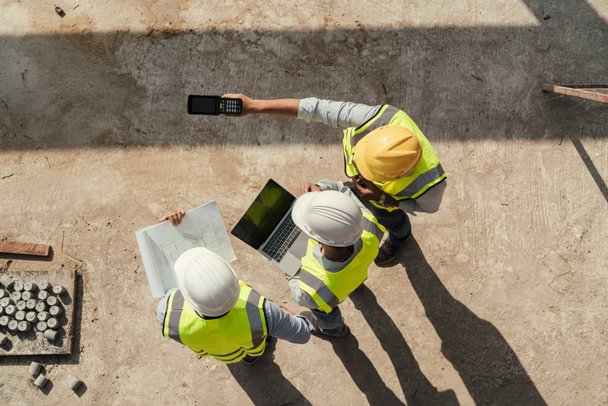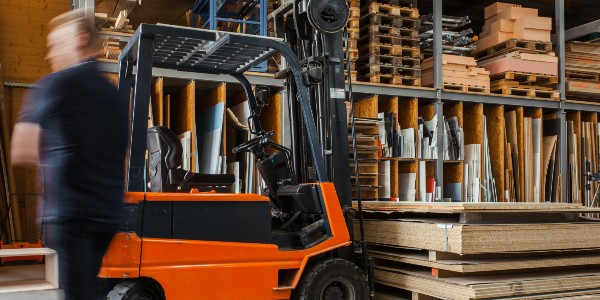April 29, 2024 Opinion piece
The architecture, engineering, construction (AEC) and facilities management (FM) industries face significant challenges in becoming more efficient, increasing safety, improving productivity, and lowering costs.
In order to address these challenges, companies must adopt digitisation, invest in R&D and deliver projects that align with evolving regulatory requirements.
For organisations to do this effectively, it is essential that any data related to an urban environment’s design, construction and ongoing management can be seamlessly shared and utilised by different stakeholders, systems and registries. This will be critical for achieving digital transformation.
GS1 standards can power this transformation. They provide stakeholders with a global data language that facilitates interoperability and data exchange, bringing visibility, traceability and certainty to building and asset information.

Powering digital solutions
For more than 50 years, GS1 standards, particularly the Global Trade Item Number (GTIN), have been powering unique identification for millions of organisations worldwide.
They have had a transformative impact on supply chain optimisation, particularly in the retail and healthcare sectors where they now have been in use for decades.
The use of GS1 standards in construction is a more recent development but continues to gain momentum.
GS1 organisations all over the world are now collaborating with industry to help the constriction sectors of their respective countries unlock the potential of GS1 standards for improving efficiency, reducing waste and supporting the use of more sustainable materials.
When combined with new and emerging digital technologies, GS1 standards can be incredibly powerful tool for enhancing urban planning process.
Simply assigning GS1 identifiers to urban assets, from buildings and streetlights to public benches and bins, could create a wealth of valuable data. This data could then be used to create interoperable registries, allowing the diverse parties involved in planning, constructing and maintaining urban environments to easily track, locate and manage these assets.
This can be taken a step further by embedding sensors such as Radio Frequency Identification (RFID) tags into GS1-coded assets, enabling the collection of real-time data on usage, energy consumption or environmental conditions to inform decisions about maintenance, future planning or resource allocation.

In fact, alongside traceability, informed decision making is one of the key benefits of standards adoption and, when combined with digital technologies, these benefits increase significantly.
For example, combining GS1 asset and location (such as GS1 Global Location Numbers) identifiers with Geographic Information Systems (GIS) enables stakeholders to actually visualise a range of scenarios that require careful consideration when planning. This could include asset distribution, traffic patterns, population densities etc., all information that plays a vital role in data-driven infrastructure planning, resource allocation and even responses to emergencies.
GS1 standards also have a valuable role to play in powering digital twins, supporting various aspects of urban planning and construction, from logistics to maintenance and lifecycle management. Adopting digital twins technology can be challenging. The current, fragmented nature of the construction industry and the need for real-time data integration are still hurdles that need to be overcome. Transitioning away from traditional methods requires investment and can be complex as there is a need for specialised skills to interpret and utilise these models.
One of the core challenges is ensuring the integrity and consistency of data across various systems and stages of the construction process. This includes accurately identifying, tracking and managing components to ensure that every element is accurately represented in the digital twin. A lack of a standardised approach to the capture, management and sharing of for data can lead to discrepancies, inefficiencies, and increased costs.
Incorporating interoperable GS1 standards into digital twins offers solutions to many of these challenges by providing a globally recognised system for the unique identification and tracking of products, assets, locations and entities. This not only streamlines data management by ensuring consistency and traceability, it facilitates the seamless exchange of data. Unique identifiers allow materials to be tracked and traced throughout the entire planning and construction processes, ensuring accurate representation in the digital twin. This level of detail and control leads to more efficient resource allocation, better quality control, and enhanced decision-making.

Shervin Yousefzadeh, head of construction at GS1 UK
Interoperability matters
In summary, the consistency and interoperability GS1 standards enable will be critical for implementing smarter urban planning solutions.
By facilitating effective communication, end-to-end transparency, and the seamless exchange of data between disparate digital systems, they help to ensure that accurate, trusted information is available when and wherever needed, leading to better outcomes in terms of safety, efficiency, and overall urban planning.
The AEC and FM industries must digitalise if they are to deliver lasting change and a clear pathway for the future. GS1 standards can power this digitalisation, keeping industry informed and consumers protected with data they can trust.



